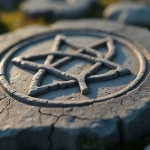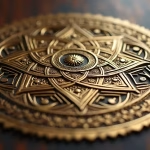Dr Bach’s Early Medical Career
After completing his medical studies in Birmingham, Edward Bach went on to become a house surgeon at the University College Hospital in London.

Dr Bach’s Early Medical Career: In addition, he maintained a private practice with a suite of consultation rooms on Harley Street. He conducted original vaccine research in his own research lab while working as a pathologist and bacteriologist.
In 1912, Dr. Edward Bach became a licenced physician. “It will take me five years to forget all I have been taught,” he said as he accepted his diplomas.
Dr. Bach was caring for wounded soldiers who had returned from France in 1917. He passed out one day and was taken to an operating room with a serious haemorrhage. Although a cancer was surgically removed by his colleagues, the prognosis was not good. They informed Bach that he only had three months to live when he regained consciousness.
Bach went back to his laboratory as soon as he was able to leave his bed. He planned to use the little time left to further his job as much as possible. However, he started to gain stronger as the weeks passed. After the three months, he was in better health than before. He believed that his sense of purpose—that he still had something to do—was what kept him alive.
Homoeopathic research-Dr Bach’s Early Medical Career
Despite the success of his vaccination research, Dr. Bach was unhappy with the way physicians were supposed to focus on treating illnesses rather than the full person. He wanted to practise medicine in a more comprehensive way. This could be the reason he accepted a position at the Royal London Homoeopathic Hospital despite not being a homoeopath.
As soon as he arrived, he saw the similarities between the concepts of homoeopathy and his work on vaccines. He created a set of seven homoeopathic nosodes by modifying his vaccinations. He gained considerable notoriety in homoeopathic circles as a result of this work and its subsequent publication. People started calling him “the second Hahnemann.”
The flower remedies
Bach had been dealing with bacteria up to this point, but he wanted to create cleaner therapies that did not depend on disease products. In an attempt to replace the nosodes with a number of kinder cures, he started gathering plants, especially flowers, which are the most developed component of a plant.
In 1930, Dr Bach quit his profitable Harley Street practice and left London because he was so excited about the way his work was going. Dr. Bach became determined to devote the remainder of his life to the new medical system that he believed nature had to offer. He brought Nora Weeks, a radiographer, along as his helper.
Dr. Bach started to give up the scientific method and its dependence on labs and reductionism, just as he had given up his house, office, and job. Instead, he relied on his innate healing abilities and let his intuition lead him to the appropriate herbs.
He discovered the treatments he desired one by one after years of trial and error, which included growing and evaluating thousands of plants. each aiming for a specific emotion or mental state. He discovered that after addressing the patients’ personalities and emotions, their physical discomfort and unhappiness would automatically subside as their bodies’ natural healing ability was restored.
From 1930 to 1934, his life fit into a seasonal routine. The winter was spent offering assistance and guidance to everyone who came seeking the medicines, while the spring and summer were devoted to finding and preparing them. Cromer, a seaside village, was where most winters were spent. Here, he met and befriended Victor Bullen, a local physician and builder.
Dr Bach’s Early Medical Career-Completion
Dr. Bach had already identified 19 of the remedies by the time he and his helper Nora Weeks moved to Mount Vernon. He located the final 19 remedies to complete the series in the nearby lanes and field. He would experience a range of emotions until he discovered the herb that would assist him since at this point his body and mind were so tuned into his work. In this way, he fulfilled his life’s purpose despite enduring immense personal hardship and sacrifice.
Dr. Bach died quietly on the evening of November 27, 1936, one year after declaring that his quest for cures was over. He left behind a medical system that is assisting many people worldwide, as well as several lifetimes of experience and effort.
Bach had been doing fruitful research in London for several years. He gained notoriety and a solid reputation among orthodox and homoeopathic physicians as a result of his work. He had now established a completely new method of healing that focused solely on a person’s mental and spiritual well-being rather than their bodily ailments.
He would likely leave behind shelves full of published writings and notes upon his passing. He was determined to keep things as simple and uncluttered as possible, though, even in this case. In the course of discovering new treatments, he eliminated superfluous notions and concepts from his practice. Conventional research and the lab were the first to depart, but more followed.
It is reasonable to assume that he would leave behind bookcases brimming with published papers and notes upon his death. However, he also wanted to keep things as simple and uncluttered as possible. As he searched for fresh solutions, he eliminated superfluous theories and concepts from his work. Other things followed, but the laboratory and conventional research were the first to leave.
Dr Bach’s Early Medical Career
He decided that many of his early notes would not survive to mislead others in the future, so he burned them in a bonfire he built in the Mount Vernon garden at the end. The 32 pages of The Twelve Healers & Other Remedies had all the information that was required.
Like the abandoned theories, he believed that the outdated work was only scaffolding, useful while the walls were being built and the roof was being installed, but cumbersome and superfluous after the home was finished.
In an attempt to address everyone’s issues with a single mixture, a few individuals started pushing the concept of merging the 38 treatments into one elixir in 1936; Dr. Bach had already attempted and given up on this idea.
“I think now you have seen every phase of the work,” he wrote to his friend Victor Bullen in October of that year, a month before his death. “It is proof of the value of our work when material agencies arise to distort it, because the distortion is a far greater weapon than attempted destruction.”
In the same letter he sets out the path that his successors should follow:
“Our work is steadfastly to adhere to the simplicity and purity of this method of healing; and when the next edition of The Twelve Healers becomes necessary we must have a longer introduction, firmly upholding the harmlessness, the simplicity, and the miraculous healing powers of the remedies.”





















